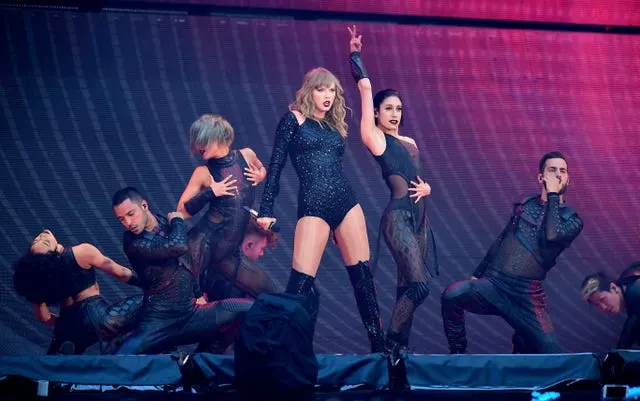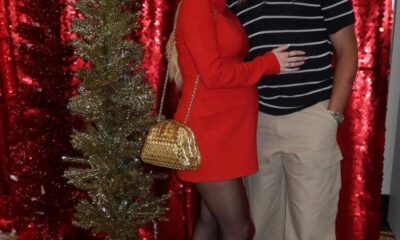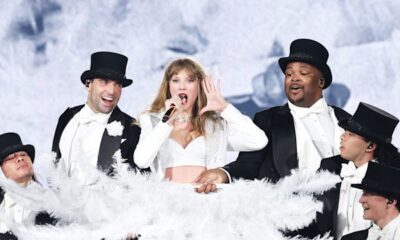NEWS
Exclusive: Is Taylor Swift becoming a power blog

As Cruel Summer fades away and she surveys the audience, Taylor Swift looks startled. She clasps her hand to her chest and shakes her head in disbelief. They cheer louder. “That went straight to my head!” she exclaims, apparently unable to take in the vociferousness of their reaction.
Of course, this is hokum – she doubtless says something similar every night. That said, a certain degree of incredulity does attend the Eras Tour.
It arrives in the UK trailing yet more mind-boggling headlines. In Aberfeldy, Loch Tay has been renamed Loch Tay-Tay in her honour. Not to be outdone, and undaunted by their inability to come up with a Taylor Swift-related pun, Liverpool has rebranded itself as Taylor Town. A radio station in London has been set up that plays nothing but Taylor Swift songs. A recent feature in this newspaper claimed that it’s become literally impossible to avoid hearing Taylor Swift’s name mentioned: no mean feat in an era where popular culture is so atomised and personally tailored that – if a rash of puzzled social media posts about SZA are to be believed – an artist can be big enough to headline Glastonbury while remaining unknown to a significant proportion of Glastonbury-goers.
So much attention has been focused on the Eras Tour that reviewing it seems almost beside the point. Every conceivable detail has already been dissected and discussed in depth, from the surprise songs she inserts into each show – here it’s Would’ve Could’ve Should’ve from 2022’s Midnights and a medley of Evermore’s ‘Tis the Damn Season and Lover’s Daylight – to the mass of visual signifiers and concert rituals that leave Swifties looking less like mainstream pop fans than Deadheads, albeit more prone to sequins and less interested in LSD than the Grateful Dead’s notorious travelling army of devotees.
Still, it’s an incredibly impressive show. It succeeds in leaping between an eclectic range of material – dubstep-inspired, dark-hued pop; tweedy folk; monster-chorus-sporting anthems and acoustic guitar-driven songs that show her Nashville grounding – all of it linked by Swift’s keen melodic awareness and ability to turn songs about famous ex-partners and celebrity nemeses into universally relatable figures.
You don’t want for plumes of dry ice and flames, costume changes – a snake-bedecked catsuit and diaphanous wood-nymph with cape suitable for Stevie Nicks-ish twirling – or indeed dancers pedalling around the stage on glowing neon bicycles during Blank Space, but it feels less predicated on special effects than on Swift’s ability to work the cameras that track her every move in a way that seems to draw in the walls of a vast rugby stadium. She’s a genuinely engaging performer on a grand scale, the big screens behind her constantly pick up on an array of expressions and asides that create a sense of collusion and intimacy.
The songs from her most recent album, The Tortured Poets Department, get the same vociferous response as the well-worn hits from 1989 or Red, but it does leave you wondering where the woman at the centre of it all goes next. It’s not Cassandra-ish to suggest that this kind of ubiquity and success is an unsustainable moment. Whether she’ll even try to is an interesting question: perhaps, like Macavity, the character Swift sang about in the movie Cats – one part of her oeuvre that doesn’t get an airing tonight – she’ll do a disappearing act.
But, for now, Taylor Swift seems all-powerful, so much so she can take risks: amid the big hits, truncated so more of them can be crammed into the show, she plays All Too Well – a 10-minute-long song – and it’s a show-stopping emotional sucker punch. And when she performs the piano ballad Champagne Problems, the response is so loud, and goes on for so long, that Taylor Swift looks overwhelmed again: this time it doesn’t seem like hokum.




















